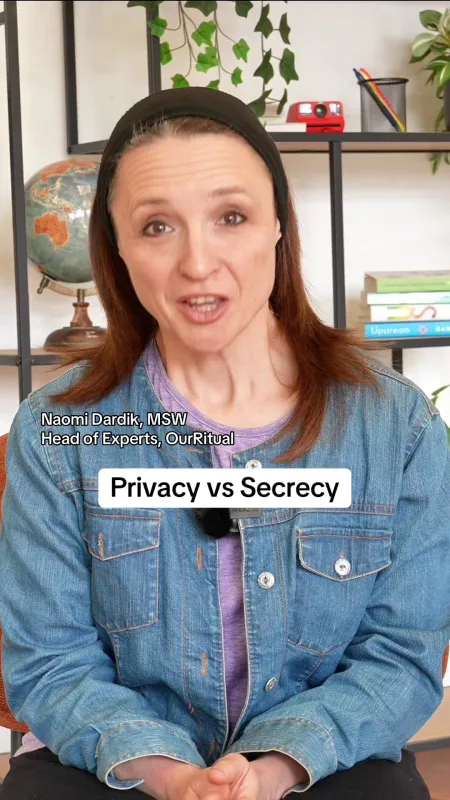hen couples face communication challenges, it's often due to differences in expectations, values, or priorities. Finding shared goals can bring you closer, helping you work more as a team, argue less, and feel more in sync. Here’s why they matter:
- Couples with shared goals report up to 30% higher satisfaction.
- Misaligned priorities, like finances or parenting styles, are common causes of conflict.
- Shared goals shift the focus from individual struggles to collaborative problem-solving.
When you’re working toward something together, it naturally becomes easier to communicate, support each other, and face challenges as a team. To get there, a few small steps can make a big difference. Start by setting aside time for honest communication and really listening to each other. Talk about what matters most to both of you, choose one realistic goal to focus on, and make sure to celebrate progress, even the small wins. If you’re not sure where to begin, relationship tools like apps or counseling sessions can offer helpful guidance and structure.
Common Communication Problems in Relationships
Every couple faces challenges when it comes to communication. Recognizing common patterns can help you identify when they’re affecting your relationship. Research shows that the way couples communicate can often predict the success of their relationship. Addressing these issues early on can make all the difference, especially when dealing with mismatched expectations or other common struggles.
Misunderstandings and Different Expectations
A lot of relationship conflicts come down to differing expectations about how things should work. These differences often stem from personal values, cultural backgrounds, family upbringing, or past experiences. Problems arise when one partner assumes their way of thinking is “the right way,” leading to misunderstandings and tension.
Dr. John Gottman’s research highlights four destructive communication habits - criticism, defensiveness, stonewalling, and contempt - that can seriously harm trust and intimacy. These behaviors often create a cycle where both partners feel ignored, undervalued, and frustrated. Over time, this can lead to resentment and emotional disconnection.
For example, take a disagreement about household chores or social expectations. One partner might assume regular date nights are essential because that’s what they grew up seeing, while the other might see it as unnecessary or even stressful. Without clear communication, these unspoken assumptions can lead to disappointment and frustration. By identifying and discussing these differences, couples can work toward aligning their expectations which is a key step in building a stronger connection.
Individual Goals vs. Shared Goals
Before couples can create shared goals that strengthen their bond, it’s important to first look at where individual and relationship priorities might be out of sync. Tension often builds when one or both partners get caught up in personal achievements and lose sight of the life they’re trying to build together. That disconnect can quietly chip away at the relationship over time.
Effective conflict resolution starts with recognizing how partners affect each other, how clashing goals can create distance, and why it’s important to address these tensions early. When couples prioritize only their individual paths, they miss out on opportunities for collaboration and mutual growth.
This isn’t at all to say you should abandon personal ambitions. Rather, it’s about aligning those individual aspirations with shared goals that benefit the relationship.
How Shared Goals Improve Communication
When couples focus on shared goals, their communication naturally shifts from conflict to collaboration. Instead of viewing challenges as personal battles, they begin to see them as shared obstacles. This shift helps strengthen their partnership.
Creating Agreement Through Shared Objectives
Shared goals help ease the tension caused by mismatched expectations. When both partners clearly understand what they’re working toward, conversations transition from a "me versus you" mindset to an "us versus the challenge" approach. This simple change in perspective can make tackling tough topics much easier.
Building shared goals starts with open and honest communication. When couples talk about their personal dreams, fears, and what really matters to them, they create space for understanding instead of assumptions. As partners start to see how their individual hopes can align, it becomes easier to move forward as a team. Instead of wondering why one person doesn’t seem to care about the same things, both people work toward goals that feel meaningful for the relationship. And when conflict shows up, shared goals can act like a compass. You can pause and ask, “Is this helping us get closer to the life we want to build together?” That simple shift can turn tension into teamwork.
But shared goals aren’t just for resolving arguments. They also bring a sense of stability and momentum to the relationship.
Building Strength and Satisfaction Together
Working toward shared goals gives couples a deeper sense of connection — and it shows. Studies have found that couples who pursue goals together tend to feel more satisfied in their relationship. But it’s not just about being happier in the moment. It’s about creating a long-term sense of partnership that feels solid and supportive.
"Shared goals serve as a unifying force in relationships, fostering collaboration and understanding." - Jane Parker, Relationship Coach
Rather than treating problems as individual burdens, couples learn to negotiate, compromise, and support each other naturally. Shared goals also make it easier to handle stress and unexpected challenges. They provide motivation during tough times, making setbacks feel less overwhelming. Plus, achieving milestones together creates moments to celebrate, strengthening the partnership and proving that challenges can be conquered as a team.
This process of working toward shared goals encourages vulnerability and openness, key elements of emotional intimacy. By being honest about their hopes, fears, and progress, couples deepen their connection in ways that daily routines often don’t allow. Aligning individual dreams with shared objectives ensures that the relationship continues to grow, paving the way for a lasting and meaningful connection.
Steps to Set Shared Communication Goals
Creating shared communication goals isn’t just about talking - it’s about connecting. It takes thoughtful conversations and a bit of planning to transform individual dreams into mutual objectives.
"When couples set meaningful goals together, it strengthens their connection, improves communication, and provides a roadmap for navigating life as a team." - Mara Hirschfeld, LMFT
The key to successful goal-setting is ensuring both partners have an equal say. Goals should reflect the shared aspirations of the relationship, not just one person’s perspective. Below are practical steps to help you and your partner establish meaningful communication goals that foster collaboration and trust.
Schedule Time for Focused Conversations
Making time for uninterrupted discussions is crucial. Choose a moment when you’re both relaxed, free from distractions, and ready to talk. Turn off your devices, close your laptops, and create a space that shows this conversation matters.
Use this time to explore questions like: What do we want to achieve together this year? What challenges can we tackle as a team? How can we support each other’s personal goals? These discussions help uncover shared objectives and set the stage for meaningful progress.
Practice Active Listening
Active listening transforms conversations into opportunities for connection. It’s about truly hearing what your partner is saying, rather than planning your response. Ask open-ended questions like, “Why is this goal important to you?” and take the time to acknowledge their perspective.
This approach not only deepens understanding but also shows respect for each other’s feelings and values. It’s a small shift that can make a big difference in how you approach goal-setting together.
Find Common Values and Priorities
Shared values are the foundation of meaningful goals. Start by discussing what matters most to each of you - whether it’s family, finances, career, or personal growth. Then, look for areas where your priorities overlap.
For example, one of you might value adventure while the other craves stability. Finding common ground could mean focusing on creating memorable experiences together while maintaining a sense of security. Write down these shared values - they’ll serve as a guide for your goals.
Set Realistic and Flexible Goals
Using the SMART framework - Specific, Measurable, Attainable, Relevant, and Time-bound - can help turn abstract ideas into actionable plans. For instance, instead of saying “We need to communicate better,” you could decide: “For the next three months, we’ll dedicate 30 minutes every Sunday evening to discuss our week and practice active listening.”
Life happens, and goals might need to shift. Whether it’s a job change, health issue, or family need, flexibility is key. Regular check-ins allow you to adjust your goals so they stay relevant to both of you.
Celebrate Progress Together
Acknowledging progress - big or small - keeps you motivated and strengthens your bond. Schedule regular check-ins, maybe monthly or quarterly, to review what you’ve achieved and what still needs work. Use tools like shared calendars or journals to track milestones and celebrate your wins.
Celebrating together not only boosts confidence but also reinforces your connection. It’s a reminder that you’re a team, capable of tackling challenges and building a stronger partnership along the way.
Tools and Resources for Shared Goals
Achieving shared communication goals requires the right tools to guide the way. Today, couples have access to digital platforms designed to strengthen relationships and enhance communication. From expert-led virtual sessions to relationship management apps, these resources provide the structure and support needed to turn intentions into meaningful progress. Let’s explore how these tools help couples work toward their goals.
Expert-Led Virtual Sessions and Personalized Exercises
When it comes to improving communication, professional guidance can make a huge difference. Platforms like OurRitual offer 20–40-minute expert-led sessions, paired with app-based exercises that couples can complete on their own time. This combination creates a personalized learning experience, helping couples stay on track between sessions.
The impact is clear: 91% of OurRitual users report improvements in their relationship within just four weeks. Additionally, 88% feel more optimistic about their future together, and 94% experience reduced anxiety about relationship challenges. These results highlight how expert-led support provides actionable strategies that directly address the communication goals couples strive to achieve.
Flexible and Inclusive Support Options
Support platforms like OurRitual are designed to adapt to the unique needs of different couples. Whether you’re in a long-distance relationship, part of a military family, navigating parenthood, or part of the LGBTQ community, these tools offer tailored solutions for a variety of challenges.
Flexibility is another key feature. Couples can attend sessions together or individually, depending on their schedules and comfort levels. This is especially helpful for those dealing with conflicting work hours, time zone differences, or situations where one partner might be more ready to engage than the other.
Military couples, for example, can find resources to address the strain of deployments and frequent relocations. Parents can access tools that help them balance family responsibilities with maintaining strong communication. LGBTQ couples benefit from support that acknowledges their unique dynamics and external pressures.
Digital Tools vs. In-Person Methods
Both digital platforms and in-person methods have their strengths, and the right choice depends on your situation. Let’s break it down:
Accessibility
- Digital Platforms: Available anytime, anywhere with internet
- In-Person Methods: Limited to office hours and location
Cost
- Digital Platforms: $32–$79 per week (OurRitual); $69–$109 per week (Talkspace)
- In-Person Methods: Typically $100–$200+ per session
Scheduling
- Digital Platforms: Flexible, often with same-day availability
- In-Person Methods: Requires advance booking
Privacy
- Digital Platforms: Access from home; less intimidating
- In-Person Methods: Confidential, neutral office setting
Non-verbal Communication
- Digital Platforms: Limited observation of body language
- In-Person Methods: Full access to non-verbal cues
Geographic Barriers
- Digital Platforms: None, ideal for long-distance couples
- In-Person Methods: Requires physical presence in one location
Digital platforms shine in terms of convenience and accessibility. Being able to connect from the comfort of home removes many barriers that might prevent couples from seeking help.
On the other hand, in-person methods offer the advantage of reading non-verbal communication and creating a more intimate connection with a professional. The neutral environment of an office can also provide a safe space for difficult conversations.
Interestingly, 72.4% of couples already use at least one relationship management app within a two-week period, showing that digital tools are becoming a standard part of relationship care. The key is finding an approach that works for both partners and fits into your life.
Whether you choose digital tools or in-person support, the most important step is simply taking action. The tools are out there - what matters is finding the ones that align with your shared goals and needs.
Benefits of Shared Communication Goals
When couples align their communication goals, the benefits go far beyond just improving how they talk to each other. Shared goals strengthen connections, provide clarity, and enhance long-term planning in ways that can transform relationships.
Stronger Emotional Connection and Trust
Pursuing shared objectives brings partners closer, fostering trust and deepening emotional bonds through mutual dedication. This shared commitment creates a sense of intimacy, which naturally leads to a clearer understanding of where the relationship is headed.
Clearer Relationship Direction
Having common goals acts like a compass for relationships, offering clarity and a shared roadmap. This makes decision-making easier and reduces misunderstandings. When both partners are on the same page, it helps ease stress, as each person knows what to expect and where they’re headed together.
Greater Strength and Fulfillment
Aligning communication goals inspires motivation and boosts overall happiness. Each milestone achieved together strengthens resilience and teamwork. Celebrating these shared successes fosters pride and joy, while mutual understanding reduces conflicts and misunderstandings. Over time, this alignment helps couples sharpen their problem-solving skills, regulate emotions more effectively, and offer better support to one another. This makes for a relationship that’s not just surviving but thriving.
Conclusion: Strengthening Relationships Through Shared Goals
Shared communication goals can significantly enhance relationships by offering clear direction and fostering stronger connections. Research highlights this impact: couples with shared goals report 30% higher satisfaction in their relationships, while 40% of couples point to a lack of shared goals as a key reason for separation or divorce.
Goals aren’t static - they’ll shift as your life evolves. That’s why it’s important to revisit and adjust them regularly. Consider scheduling monthly or quarterly check-ins to ensure you’re staying aligned. A practical way to start is by creating a "goal map" together. This can include areas like finances, health, career ambitions, and personal interests. Revisit this map periodically to track progress and make adjustments as needed.
For additional support, tools like OurRitual provide virtual sessions and tailored exercises designed to help couples work toward their shared communication goals. These resources can accommodate a variety of relationship dynamics, offering flexibility to suit your unique needs.
By setting clear, adaptable goals and utilizing expert resources, you’re taking meaningful steps toward better communication and a stronger partnership. Shared goals act as a compass, guiding you through uncertain times, motivating you during challenges, and giving you reasons to celebrate your successes. When your visions for the future align, you’re building a relationship that can endure difficulties and grow stronger with each milestone.
Take the first step this week: carve out time to discuss one area where you’d like to grow together. That single conversation could be the start of a deeper, more connected relationship.
FAQs
How can couples create shared goals to improve communication and strengthen their relationship?
Creating shared goals as a couple begins with honest, open discussions about your individual dreams and values. By pinpointing where your personal goals intersect or complement one another, you can craft a shared vision for your relationship. Regularly revisiting and adjusting these goals ensures they stay meaningful and aligned as your lives change.
Prioritizing clear communication and mutual support is key. When both partners feel truly heard and respected, working toward a common purpose becomes much more natural. Tools like OurRitual can be incredibly helpful in this process, offering adaptable resources and expert advice tailored to your relationship. These tools can guide you through challenges and strengthen trust as you grow together.
How can couples stay flexible and adjust their shared goals as their relationship grows?
To keep your relationship on track as it grows and changes, it’s essential to revisit your shared goals regularly. Take time to reflect on whether those goals still align with your values and priorities as a couple. If something no longer fits, don’t hesitate to adjust or even let go of it. Honest and open communication is the foundation here - talk about changes in personal or shared aspirations and make sure any new goals feel right for both of you.
It can also help to strike a balance between individual and shared goals. By alternating your focus, you can support each other’s personal growth while also strengthening your connection as a team. A mix of flexibility and understanding will make it easier to handle these shifts and ensure your relationship stays centered on what matters most to both of you.
How can setting shared goals help couples communicate better and resolve conflicts more effectively?
Setting shared goals can greatly improve how couples communicate and handle conflicts by giving them a shared purpose and encouraging teamwork. When both partners agree on mutual aspirations, it minimizes misunderstandings and helps them approach disagreements with more respect and clarity.
These shared goals serve as a roadmap during tough times, prompting couples to tackle challenges together rather than dwelling on their differences. By focusing on what truly matters to both, partners can deepen their bond and foster trust in their relationship.
























